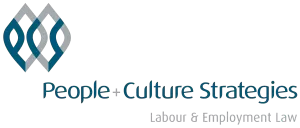One mistake often made by employers is overlooking that their duty to control work, health and safety risks also extends to the risks that often cannot be seen. These risks may only be noticed once employees are physically, psychologically and emotionally affected, by which time it can be too late.
Australian states and territories' work, health and safety laws refer to these risks as "psychosocial hazards" and regulate employers' management of those hazards.
There has been some development in this area. From 1 July 2023, the Northern Territory's work, health and safety laws will be updated to introduce regulations regarding psychosocial hazards. These regulations will be similar to the changes that have been introduced recently in other Australian states and territories, as well as federally.
What are psychosocial hazards?
A psychosocial hazard is anything that could cause psychological harm in the workplace. Common psychosocial hazards include job demands, poor support, bullying, harassment, sexual harssment, conflict or poor workplace relationships and interactions.
Psychosocial hazards can lead to harm, including psychological harm such as anxiety, depression, post traumatic stress disorders and sleep disorders, or physical harm such as musculoskeletal injuries, chronic disease or fatigue related injuries.
Hierarchy of controls
At the federal level, the Work Health and Safety Regulations 2011 were amended on 1 April 2023 to apply a "hierarchy of controls" to psychosocial hazards. This is a step-by-step approach to eliminating or reducing risk that works by ranking risk controls from the highest level of protection and reliability, through to the lowest and least reliable protection. From there, employers are required to implement the higher order control measures first, unless it is not reasonably practicable to do so.
What are the states and territories doing?
Queensland also introduced a similar hierarchy of control model this year. However, not all states utilise the hierarchy of control model when managing psychosocial risks. For exmaple, in NSW, the SafeWork NSW Code of Practice on managing psychosocial hazards at work requires organisations to take the following steps:
- Step One: identify the psychosocial hazards.
- Step Two: assess and prioritise the psychosocial hazards and risks.
- Step Three: control psychosocial hazards and risks.
- Step Four: proactively implement, maintain, monitor and review the effectiveness of controls.
What are the key takeaways?
Employers should ensure that they are familiar with psychosocial hazards as a work, health and safety issue. Ensuring that such hazards are appropriately controlled should be done in accordance with the applicable work, health and safety laws, but this is likely to include:
- understanding what psychosocial hazards might look like in the workplace by considering the management of work, the work environment and workplace interactions;
- talking to workers who are likely to be affected by a psychosocial hazard, such as workers who work directly with customers, workers who have recently been affected by an organisational change, or workers who work in remote or isolated situations;
- performing risk assessments by considering the duration, frequency and severity of the hazard;
- finding solutions to prevent psychosocial risks that are tailored to your organisation and workplace and work towards either minimising or eliminating risks entirely; and
- regularly reviewing and maintaining the control measures that have been implemented.
You can also read our blog about managing risks to mental health in the workplace.

